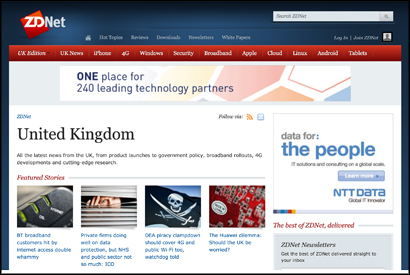Business technology news website ZDNet not only has a responsive site which adapts to the size of the screen it is viewed on, but has a responsively designed CMS, which scales to fit the screen size with the aim of making it easy for journalists to file stories from a smartphone or tablet.
The responsive CMS, which was developed internally, was introduced in July, Laura Jenner, product manager for CBS Interactive UK, which publishes ZDNet, said at today’s AOP Digital Publishing Summit.
In the session, which focussed on user experience and responsive (or adaptive) design, Jenner argued the case for responsive design, saying it is is “much better for user interaction” than an ‘m.’ mobile site.
And ease of using the site to download a white paper, for example, is key.
Loyal users are key to building audience as they always have been.
There are also business benefits of adaptive design, Jenner said, explaining that both users and search engines prefer using a responsively-designed site.
“Adaptive design is Google’s recommended option,” Jenner added.
And mobile means “you also have access to readers at times you didn’t previously”, she explained. “In the past you would have to wait until 9am on a Monday until people returned to their desks.”
Responsive design may also reduce the need for native apps and therefore reduce overheads, she added.
Asked how to convince advertisers of the advantages, Jenner said:
We are not forcing users onto another platform, they are already there. And we are providing a much better environment for advertising campaigns.
Asked whether journalists need to adapt articles or headlines to fit mobile reading, Jenner said “we don’t tell [journalists] to write a headline that fits on mobile”, adding that she believes people don’t want a shorter version of the story on mobile but want the full article.
In discussing development costs, she explained that responsive design is probably no cheaper as a one-off cost than developing native apps, but that the option is “far easier to iterate” and develop over time.
